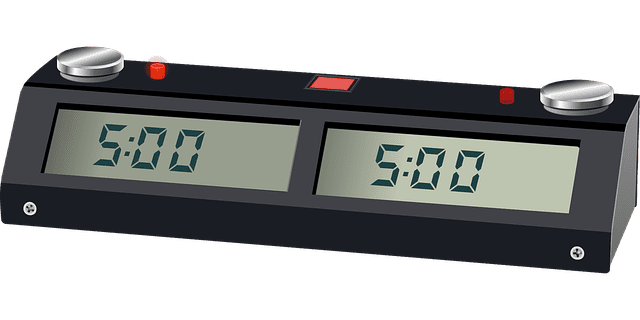The king is the most important piece in the game. However, it is also the weakest one. So how does the king move in chess?
The king can move only one square in any direction, whether it is forward, backward, or sideways. The king also has a special and unique move, known as the castling move.
The king can never move into a position that is dangerous for him. Since the objective of the game is to trap the King, the downfall of your King would mean your opponent has won the battle. The King is easily recognizable by the cross on the top of his crown. The King is also the tallest and most imposing piece on the board.
How Does The King Move In Chess?
Although the King is the most important piece on the board, he moves very slowly. He can only move one square in any direction: forward, backward, left, right, or diagonally. Because he moves so slowly the King is not very powerful. He cannot escape the enemy quickly and relies on his loyal army to protect him against attack.
The King can move in any direction one square at a time

Capturing with the King
The King captures pieces in the same way that he moves. He can take any enemy piece that is standing next to him.
King Capturing Pawn

Moving the King out of Check
When the King is attacked by an enemy piece we say that he is in check. The King can never stay on or move to a square where he could be captured by an enemy piece. Here the black Rook is attacking the white King:

There are three ways to escape your King from check:
- Capturing the checking pieces
- Block the check by putting one of your pieces between the checking piece and the King.
- Move your King out of the way and out of check
In this case, the best move for white is to capture the black rook and draw the game.
The Trapped King
If you cannot escape from check using any of the three escape methods, then you are in checkmate and the game is over. The word checkmate comes from the Persian word shah mata which means the “King is dead”. Here the white King cannot escape from the black Queen and so the game is over.

It’s checkmate because the checking piece cannot be taken, the check cannot be blocked and none of the squares that the white King could move to are safe.
Castling (Special King Move)
Castling is a special move that can only be done once in a game and involves moving the Rook and the King for the King’s protection. This special rule applies to the king and the rook. Castling allows you to do two important things:
- Get your king to safety
- Move your rook out of the corner and into the middle of the game.
You can move the king two squares to one side and then shift the rook right next to the king on the opposite side. However, to be able to castle, the following conditions must be fulfilled:
- For the rook, it must be the first move
- For the king, it must be the first move
- The path between the king and rook must be clear (no pieces can block them)
- The king cannot be under “check,” or must not have passed one
If you castle in one direction, the king will get closer to the side of the chessboard. This is called a “kingside castling”. If you castle to the other side, where the queen sits, it is called a “queenside castling.” No matter what side it takes, the king will move only two squares when castling. Your King is castled because he is safer behind a wall of pawns.
White may castle queenside

Super King Moves In The Endgame
The King doesn’t get many chances to be a hero. He always has to think about his own safety. Instead of being a brave leader, he usually hides like a coward behind his pawns with hardly anywhere to go. How embarrassing. But all that changes in an endgame. With fewer pieces on the chessboard, the danger of checkmate is reduced. The King can move out of its rabbit hole and come out to fight like any other piece.
Kings are powerful, they attack or defend every square around them. In the endgame a King is stronger than a Knight or Bishop. If we gave a point value to the King, he would be worth 4 points!
Our first example shows how a King can overpower a Rook. The pawns are all locked up and it looks impossible to get through them. But the white King has an idea!
(Open pgn to view game)
1.Rxg7! Rxg7 2.Kh6!
For the price of a Rook, the King and g-pawn are free to advance. The black Rook is no match (2.Kf6 also wins)
2…Rg8 3.Kh7 Re8 4.g7 Ke7
4…Re7 5.Kh8 Re8+ 6.g8=Q will lead to the same thing.
The material is equal again, but won’t be for long. The white King is in a position to win the black e pawn. 7…Ke7 8.Kg6 Ke8 9.Kf6 Kd7 10.Kf7 Kd8 11.Kxe6 1-0
Short Ranged King
Like a Knight, the King is a short-ranged piece. He has to be developed to show his strength. He can’t help us much if he’s sitting on the back rank. One of the first things we should do in an endgame is activate our King and move it off the back rank. The fewer enemy pieces on the board, the more active your King should be.
Rule: When there are just pawns on the board, you should quickly move your King to the center of the board where it can attack enemy pawns, support your passed pawns and block the enemy king from accessing crucial squares. The position above looks fairly even. But white loses because the black king can move to the center very quickly.
1…Kf7! Kg1
If white tries to advance some pawns by 2.Bc3 Ke6 3.a4, Black plays 3…Nd4! and wins after 4.Kg1? Ne2+ 5.Kf1 Nxc3 or 4.Bxd4 exd4 5.Kg1 Kd5 6.Kf1 Kc4.
2…Ke6 3.Kf1 Kd5 4.Ke2 Kc4!
Checking with 4…Nd4+? is a needless complication that lets the white king advance. 5.Kd3 e4+ 6.Ke3 Nf5+ 7.Kf4
5.Kd2 Kb3!
The King is very good at attacking a group of pawns. Once he gets beside them, the pawns have trouble defending themselves. 5…a5!? was also an excellent move (6.b5 Kxb5 or 6.bxa5 Nxa5 7.Kc2 Kxc5)
6.Kc1 Nd4 7.h4
Exchanging pieces leaves a hopeless pawn ending. 7.Bxd4 exd4 8.Kd2 Kxa3 9.Kd3 Kxb4 10.Kxd4 a5
7…Nc2
And now white pawns will start to disappear. 8.h5 Nxa3 9.g3 Kxb4 0-1.
Related Post: How does the Queen move?
King Vs King ( Opposition & Outflanking)
In pawn endgames, the battle is often decided when one king marches in and captures some pawns. Sometimes a King can do this even if the other King tries to keep him out. He finds a way to force his way through. When Kings fight each other, they use two standard methods:
- Opposition
- Outflanking
An opposition occurs when the Kings stand on the same line with one empty square between them. You have the opposition if the other King has to move. The opposition lets you control the situation. When the other King moves, he gives you the right. It’s almost like a quest for dominance to see which King is stronger. If the enemy King retreats, then your King can advance. If he moves to the side then you have a choice:
- Go around him (outflank)
- Stop him from advancing (keep the opposition)
Black to move. White has the opposition

1…Kf6 2.Kd5 The black King gives way and the white King outflanks him. Flank is another word for the side. Outflank means to get past someone by moving around their side. It’s fun! White’s other option was to keep the opposition by 2.Kf4. The black King can make no forward progress then.
In this position, each player has a pawn, but the white King can overpower Black, winning the pawn and the game. It almost seems unfair!
1.Kc5!
White begins by taking the opposition. Going straight ahead with 1.Kd5? is a major blooper. Black has the opposition after 1…Kd7! The white King is kept out easily then (2.Kc5 Kc7 3.Kd5 Kd7)
1…Kd7
Other moves allow 2.Kd6, getting to the pawn quickly.
2.Kd5
White has to keep the opposition. It’s too soon to outflank by 2.Kb6 because of 2…Kd6 and Black wins.
2…Ke7
Black’s only move to prevent 3.Ke6
3.Kc6!
The white King outflanks. Now that he has reached the same rank as the black pawn, he’s ready to come across for the capture.
3…Ke8 4.Kd6 Kf7 5.Kd7 Kf8 6.Ke6 Kg7 7.Ke7 And the black king has to give up his protection of the pawn
7…Kg8 8.Kxf6 1-0
Related Post: How do all the chess pieces move?






